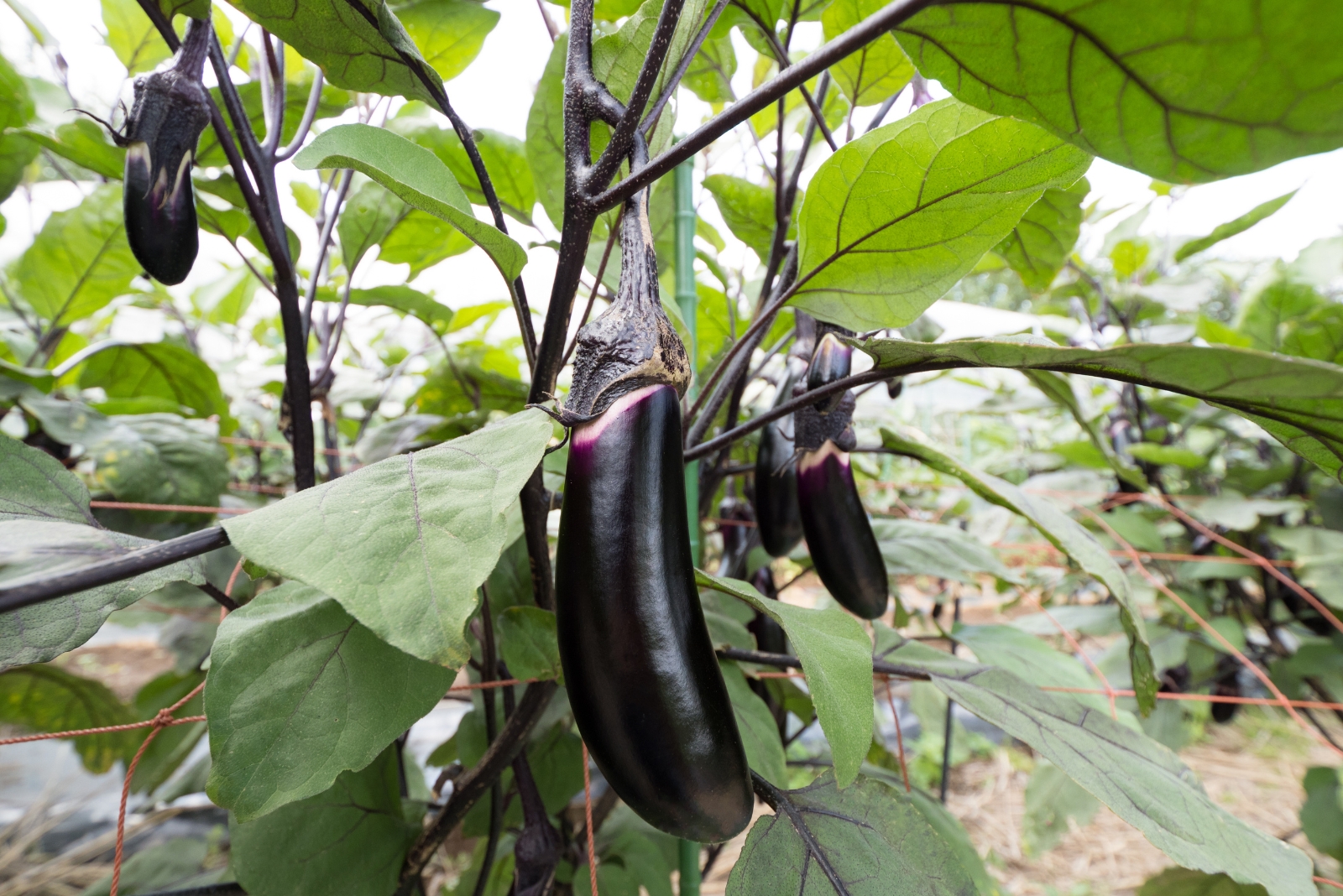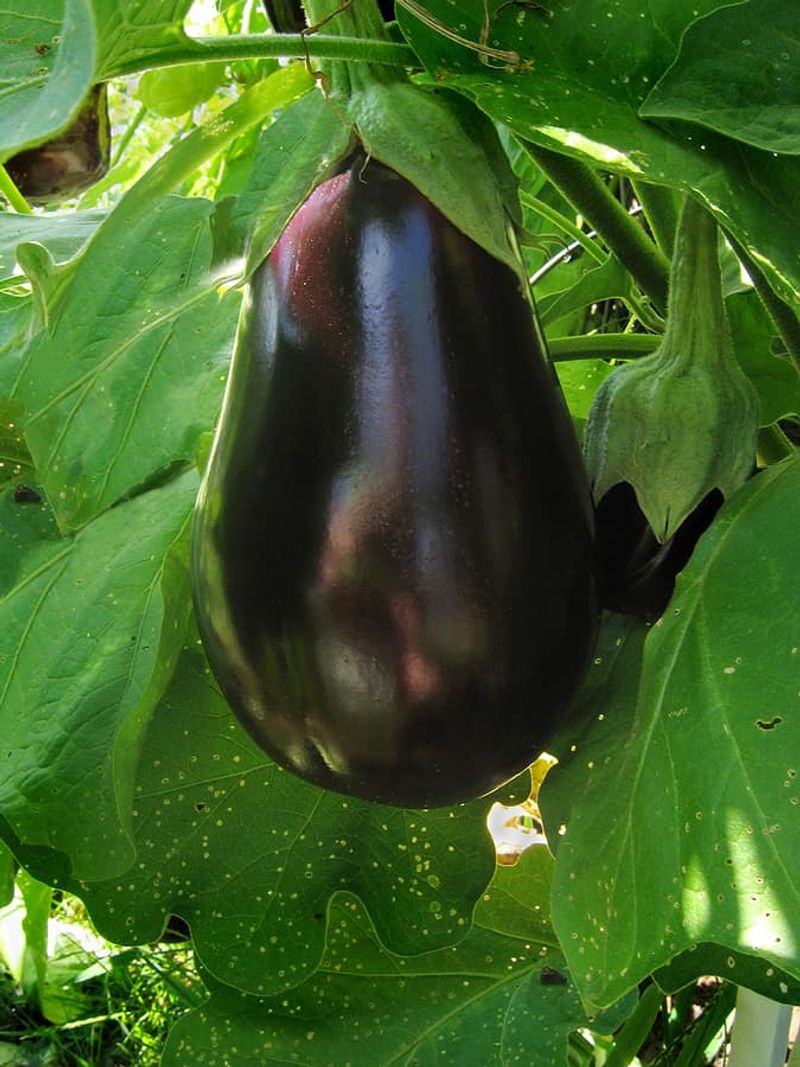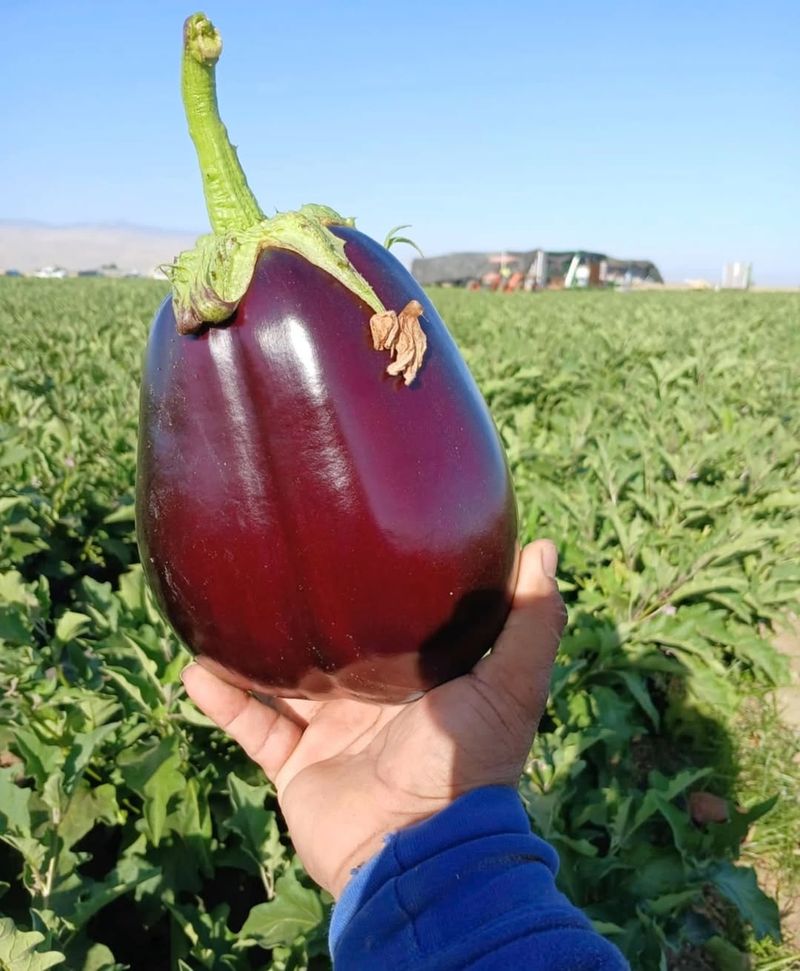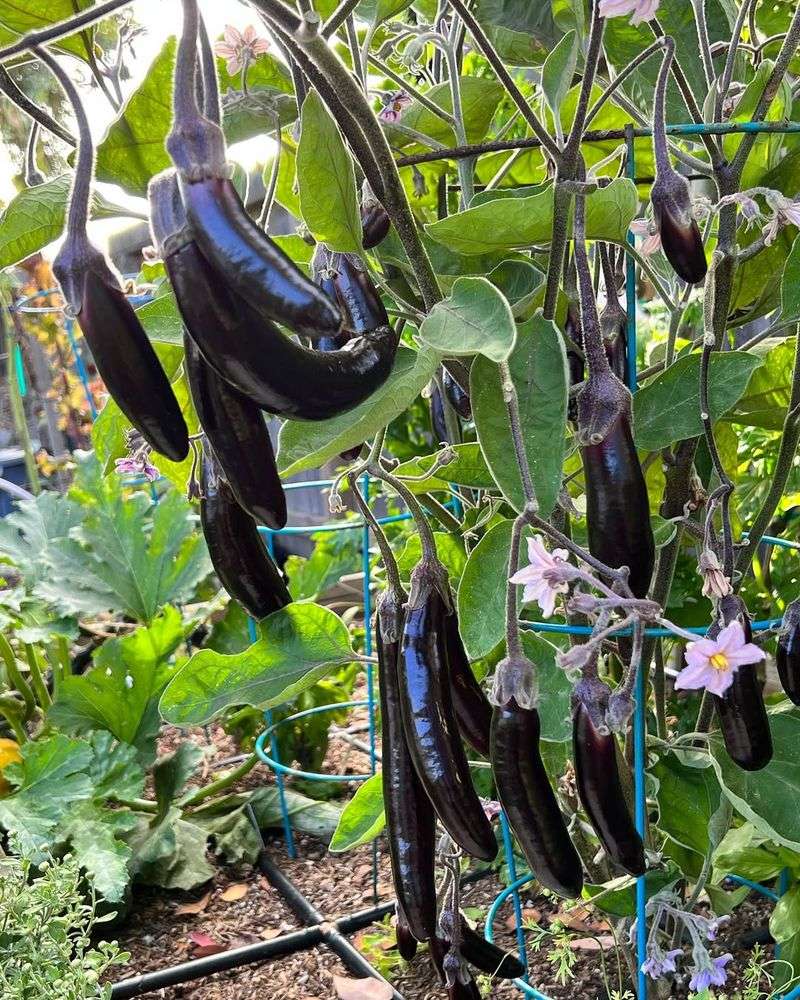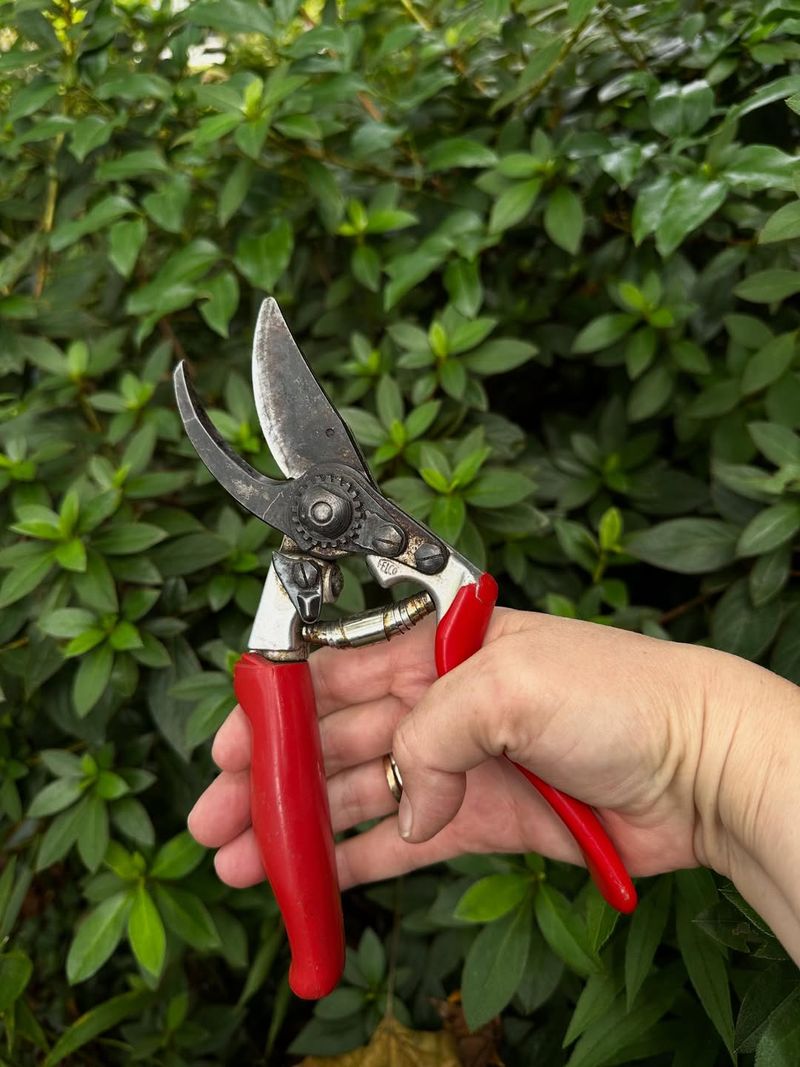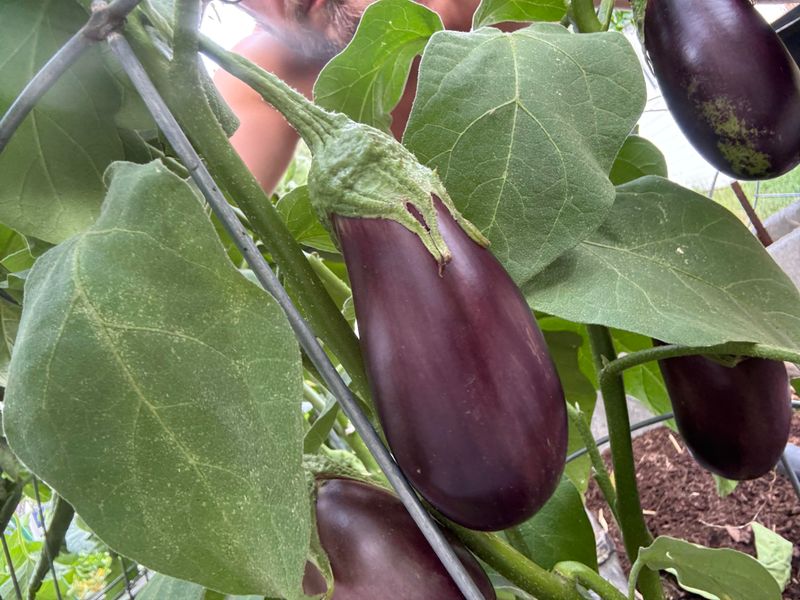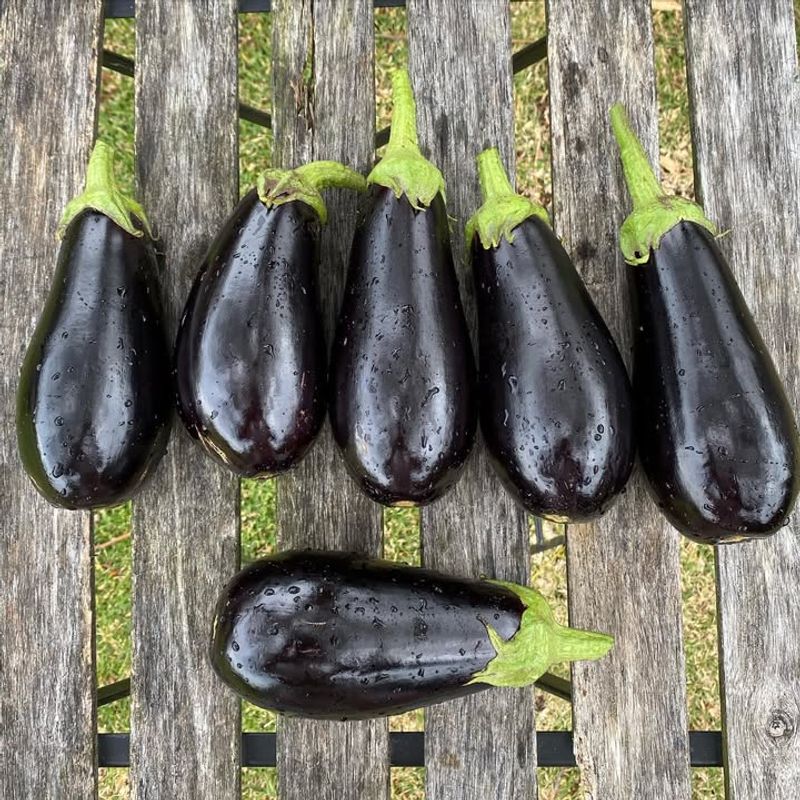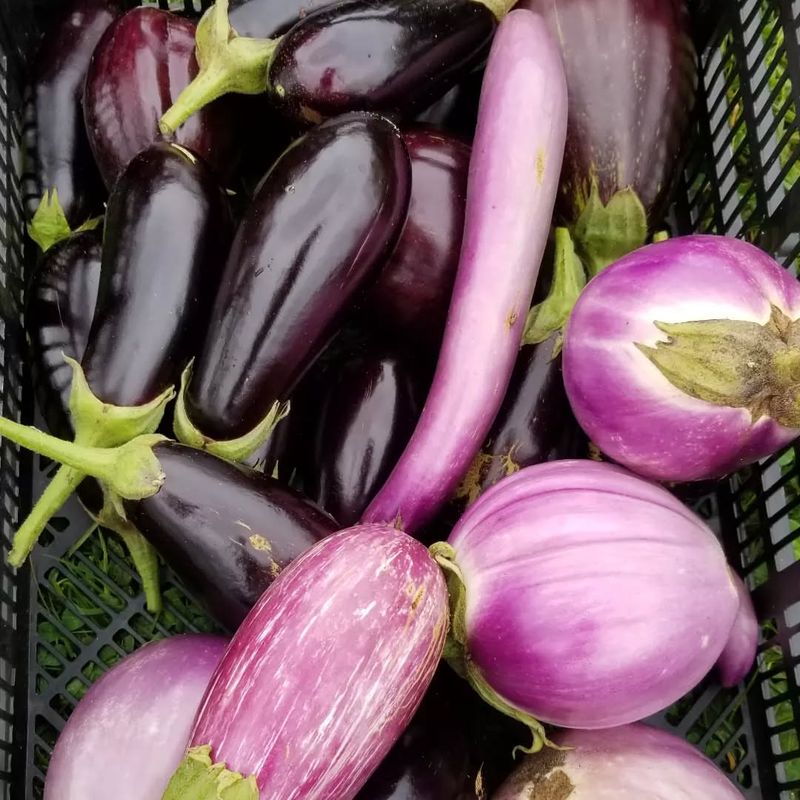Growing eggplant in South Carolina’s warm climate can be incredibly rewarding, but knowing when and how to harvest makes all the difference. Picking your eggplants at just the right time ensures they taste amazing and have that perfect texture everyone loves.
If you’re a first-time gardener or have been growing vegetables for years, these simple tips will help you get the most delicious eggplants from your garden.
1. Watch For The Perfect Size And Glossy Skin
Size matters when picking eggplants, but bigger isn’t always better. Most varieties taste best when they reach about six to eight inches long, though some types stay smaller.
Look for that beautiful glossy shine on the skin—it’s nature’s way of saying the eggplant is ready. When the skin starts looking dull or loses its shine, you’ve waited too long.
Overripe eggplants develop bitter flavors and tough, seedy flesh that nobody enjoys eating.
2. Check The Firmness With A Gentle Press Test
Your fingers can tell you everything you need to know about ripeness. Gently press the eggplant with your thumb—it should feel firm but give slightly under pressure, kind of like pressing a ripe avocado.
If it feels rock-hard, give it a few more days to mature on the plant. When the fruit feels too soft or squishy, you’ve missed the perfect window.
This simple touch test works for all eggplant varieties grown in South Carolina gardens.
3. Harvest During South Carolina’s Cooler Morning Hours
South Carolina summers get brutally hot, so timing your harvest matters more than you might think. Pick your eggplants early in the morning before temperatures climb and the sun beats down on your garden.
Morning harvest keeps the vegetables cooler and helps them stay fresh longer after picking. The plants also handle the stress of harvesting better when they’re not already wilting from afternoon heat.
You’ll notice the eggplants feel firmer and crisper too.
4. Use Sharp Pruning Shears Instead Of Pulling
Never twist or yank eggplants off the plant—you’ll damage both the fruit and the stem. Sharp pruning shears or garden scissors make clean cuts that heal quickly and keep your plants healthy.
Cut the stem about an inch above the fruit’s cap, leaving a little handle attached. Pulling damages the plant’s branches and can even uproot smaller plants entirely.
Clean cuts also prevent diseases from entering through torn, ragged wounds on the stem.
5. Don’t Wait For Color Changes On Purple Varieties
Many gardeners make the mistake of waiting for their purple eggplants to turn even darker, but that’s actually a sign they’re past their prime. Most traditional purple varieties reach perfect ripeness while still showing that vibrant, rich purple color.
Once they start turning brownish or dull purple, the seeds inside have grown large and bitter. South Carolina’s long growing season means you’ll get multiple harvests, so don’t hesitate to pick early.
6. Harvest Regularly To Encourage More Production
Eggplants are generous producers when you treat them right, and frequent harvesting keeps them pumping out more fruit. When you leave mature eggplants on the plant too long, it signals the plant to slow down production and focus on seed development.
Picking every few days during peak season tricks the plant into making more flowers and fruits. South Carolina’s extended warm season means your plants can produce well into fall with consistent harvesting.
7. Handle With Care To Prevent Bruising And Damage
Eggplants bruise easier than you’d expect, and those brown spots affect both appearance and flavor. Handle each fruit like you’re carrying eggs—gently and with respect.
Place them carefully in your harvest basket instead of tossing them in. Bruised areas turn mushy and bitter, ruining otherwise perfect eggplants.
Use a shallow basket or container so the weight of upper fruits doesn’t crush the ones below. Proper handling keeps your harvest looking beautiful and tasting delicious for days.

